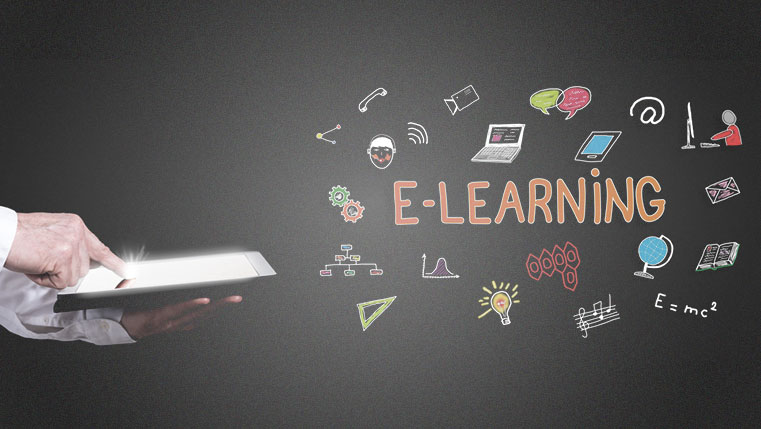eLearning – A Tool to Improve Organizational Efficacy

According to a research report by ATD, “the percentage of high-performance organizations who use eLearning in a majority of their learning assets has tripled, from 8 percent in 2012 to 27 percent in 2017.” The report also estimates that half of high-performance organizations will make the majority of their learning assets available as eLearning by 2022.
Organizations look for eLearning partners who can help them with:
- eLearning design skills
- Authoring tools & applications
- Audio & video design skills
Also, in order to implement e-learning and take advantage of its benefits to the fullest, organizations must give their learning & development staff the resources required to design and deliver eLearning.
Organizations ensure this by:
- Partnering with developers of eLearning, so that they get access to tools and applications that are vital for eLearning development.
- Sending employees to workshops and conferences that focus on e-learning design and implementation. This is how L&D professionals gain insights from real-time experiences of organizations.
- Providing staff resources such as blogs, eBooks, and webcasts required to keep them up-to-date with e-learning technology and trends. This helps them develop and deploy the right kind of training solutions that meet desired training outcomes.
Due to the dynamic nature of today’s business environment, it has become crucial for organizations to have training solutions that serve the purpose of rapid training, while being cost and time-effective.
eLearning ensures that employees are provided with “just-in-time” learning and NOT “just-in-case” learning. Here are some examples of how we have helped organizations overcome their training challenges related to content, time, cost, and location.
Success Story 1: Fire Extinguisher Training Using Storyline
We developed an e-learning program for one of our clients, a leading provider of logistics and warehousing services, that wanted a simple yet engaging online training program on fire safety. Specifically, a course on how to use a fire extinguisher. They wanted a training solution that could:
- Include a video compatible with multiple devices
- Email a completion certificate to the trainee once the course is completed
- Track the learners who complete the training successfully
Dividing the large video into smaller videos, we overcame the problem of buffering and were successful in keeping the course engaging. We included an Action button in the Result page that sent a completion certificate to the learner on completion.
We designed the course in such a way that every time an employee completed the course and received the certificate, a copy of the certificate was also mailed to the trainer. This way, the client could easily keep track of learners who passed the quiz.
Success Story 2: Course on the Essentials of Child Birth for a Healthcare Equipment Manufacturing Company’s Sales Team Using Lectora
A healthcare equipment manufacturing company wanted its sales force to be trained on pre and post-natal care of the child and the mother, so that the benefits of their equipment could be conveyed to prospects. Since the company’s sales force was spread across a vast geographical area and was uncomfortable talking about the sensitive subject, e-learning was considered to be the most viable option to overcome logistical issues and break the barriers, to help sales force talk confidently about the subject.
We provided the client with a user-friendly, engaging, and instructionally rich eLearning course using Lectora. As the subject matter was based on facts, using images was a must for learners’ better understanding. We used silhouettes and vector images instead of real images so that learners do not feel uncomfortable or disengage from the course. The client was delighted with the interesting course that kept learners engaged with interactivities.
Success Story 3: Course on Data Privacy Policy for an Electronic Manufacturing Giant Using Adobe Flash
One of our clients, an electronics manufacturing giant needed an engaging compliance course on data privacy which could accentuate their latest IT security concerns. These concerns emerged due to employees interacting with vendors and customers on a daily basis while exchanging information; this posed a threat to the company and its business partners’ data.
The company wanted us to design a course that highlighted the latest additions to its policy while giving an exploratory game-like approach to it. The same course had to be delivered in 9 languages. We designed a course that informed learners about the additions and changes in the policy, which was followed by a Data Privacy Challenge. The Data Privacy Challenge was a gamified approach to engage
learners in thought provoking scenarios and questions, based on the right usage of data and its data protection standards.
As evident, e-learning can be used to address several training needs, for various employee groups. How do you envisage incorporating it in your training framework?




![What is Custom eLearning — Benefits & Tips for Effective Design [Infographic]](https://blog.commlabindia.com/hubfs/blogs/custom-elearning-benefits-design-tips.jpg)
